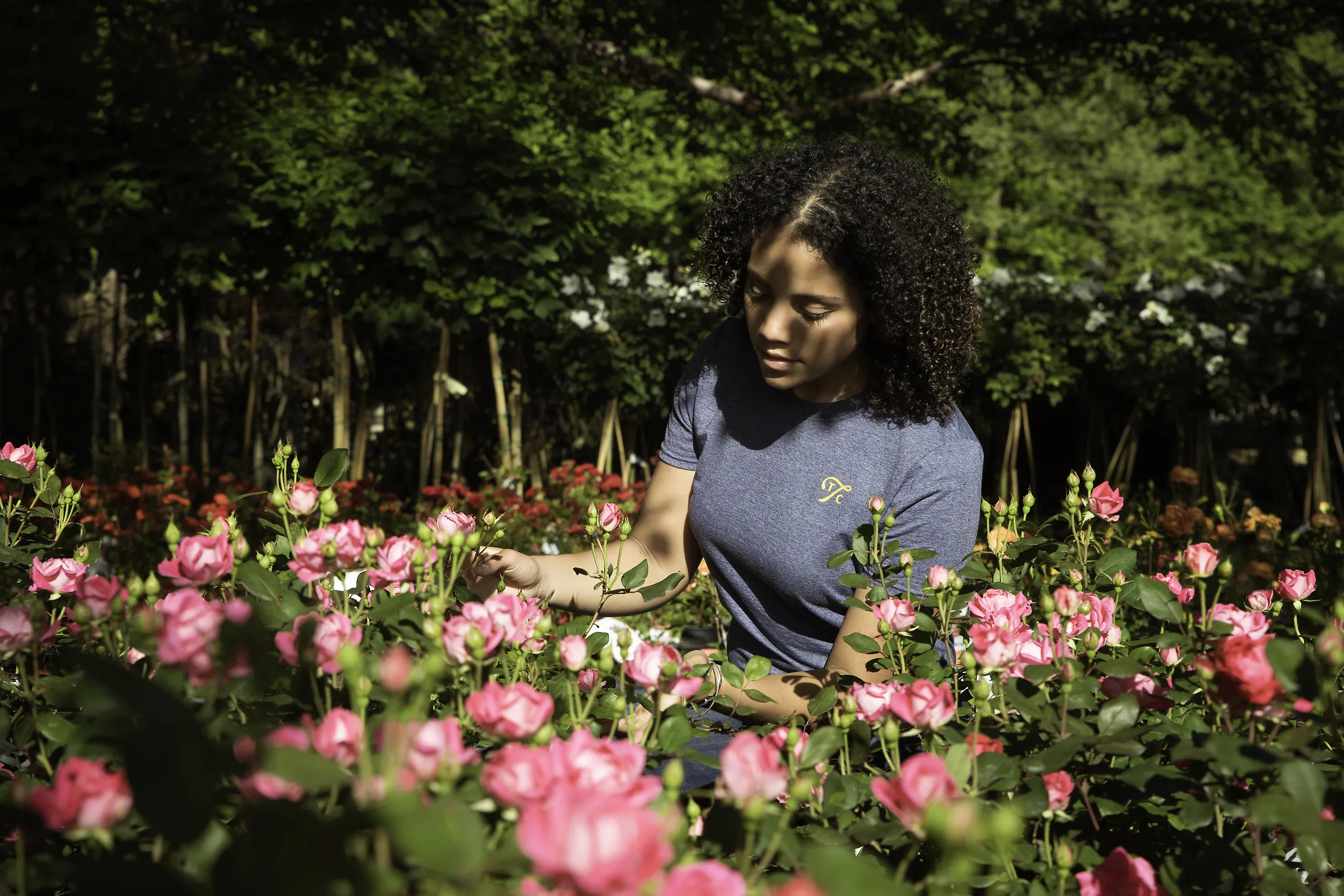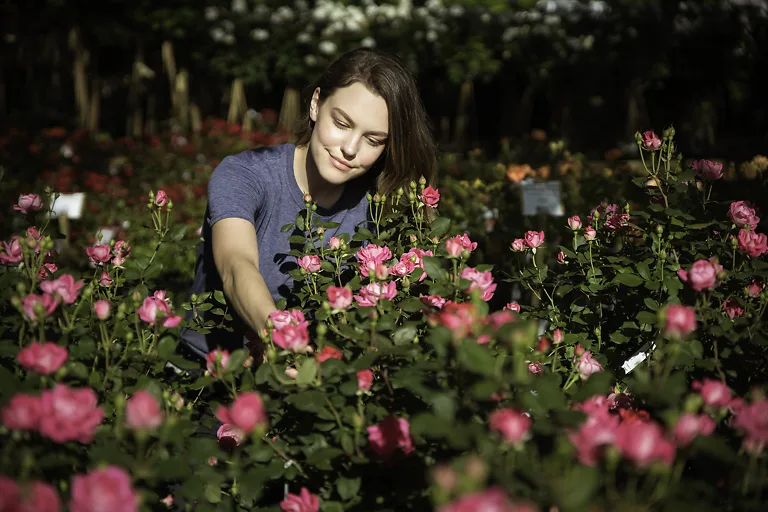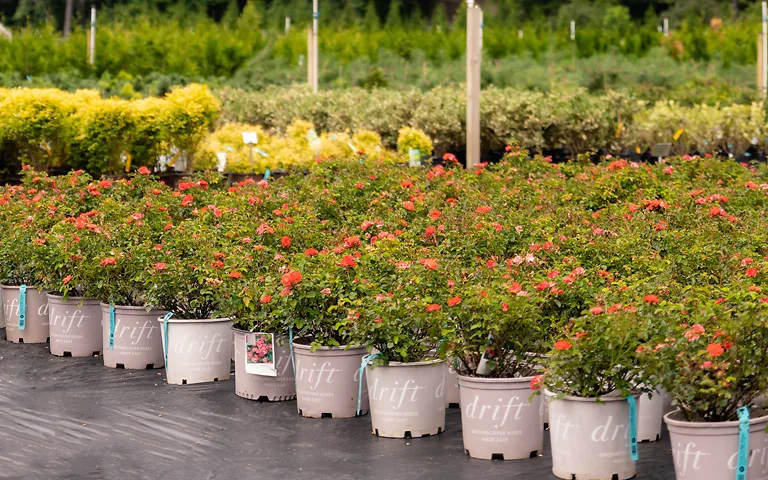
Written by s • Keep Your Rose Bushes Blooming All Summer
Almost everyone loves roses, and millions are planted each spring by eager gardeners. A lot of them, though, don’t live up to the dream, and after a decent show in spring they sit and sulk through summer, perhaps losing most of their leaves and producing few if any blooms. What went wrong? Everyone wants to succeed, and with a little bit of care you too can have beautiful roses that keep on coming, if you follow a few simple steps. Let’s look at what it takes to have fabulous bushes that everyone admires, and that brighten your garden month after month, year after year. It isn’t hard, but it does take smarts.
Choose the Right Variety
This is the first step to success, and the most important one. What do you want from your roses? Big, classic pointed buds and large blooms to cut for vases? Colorful, bushy plants for your shrub beds? Trailing groundcovers? A striking plant full of flowers for a terrace? More natural-looking bushes for an informal garden? Once you have made that choice – and of course maybe you want a bush or two to cut, and others for your beds – then you are well on the way to success. It’s all too easy to be tempted by a colorful display at your local Big Box into planting a bush that is totally unsuitable, so take your time.
Instead of taking the plunge with the first thing that catches your eye, once you know what you want, check out our extensive range of roses of different kinds. These cover the field from the reliable Knock Out® range, perfect for landscaping, to the gorgeous Drift® roses, ideal for edging and groundcover.
There is another factor too, and that is the best conditions for the variety of rose you are trying to grow. Different varieties do their best in different climates, with good roses for areas with damp, cool summers and others that enjoy heat. It pays to research the best ones for your area. Do you have a keen rose-grower as a neighbor? Ask them what varieties they are growing. Is there a local rose club or society? They will often know exactly what are the best varieties in your area. There are often Facebook groups and so on where you can get really good advice for your local conditions, and make new friends with a common interest.
Prepare the Planting Spot
Even more than other plants, roses benefit from a little work when planting. Digging a hole the size of the pot in poor soil and expecting miracles is only going to produce disappointment. Gardeners call roses ‘heavy feeders’, and they sure to enjoy the plant equivalent of the Double Quarter Pounder with Cheese. Add a bucket of rich garden compost, commercial compost or rotted farm manure if you can find it, and a good handful of bonemeal or superphosphate. Spread that over an area 3 feet square and then turn it into the soil to the full depth of a spade. After all that effort, take a break with an iced tea or a beer! You deserve it.
Plant Your Rose the Right Way
Now it’s time to plant. The ideal thing is to water the pot thoroughly the night before, but if you didn’t, water it now. If the planting area is dry, water it too the night before.
Take a look around the base of the plant to see if there is a graft union, also called a bud union. Take a look at these pictures. The plant on the right is budded. See how it has one strong trunk and branches on one side only? See that small cut branch in the front? If you see these things, your rose is budded, and grows on roots of a special rose just for roots. If your bush looks more like the one on the left, with lots of branches in all directions, it was grown from a cutting, and is growing on its own roots.
Now when you plant, note that swollen area on the grafted rose, or the spot where all the branches are radiating from on the cutting rose. That area should just sit on the ground – not be buried and not by up in the air exposing root or trunk.
Make a note if your rose is from a cutting. That means that all shoots you see in the future are the rose. If it was budded then watch out for different-looking stems sprouting vigorously from beneath the ground. Those aren’t your rose, and you should dig down carefully and slice them cleanly off the roots where they are sprouting.
Slide the plant out of the pot, and dig a hole in your prepared area just deep enough to take it. Make sure the bottom of the hole is firm and put the rose in. Check that the height is correct and fill back about two-thirds of the soil. Now fill the hole with water and let it drain away. Put in the rest of the soil, firm it down gently, and you are done. More watering isn’t needed for a couple of days at least.
Watering – It Matters a Lot
Roses like lots of water, so you might easily need to water your bushes twice a week, unless it rains for a long time. Don’t be fooled by thunderstorms, which, even if it rains hard, are over too soon to make much difference. Most of the water runs away and doesn’t penetrate. What you want is ‘growing rain’ – steady, moderate rainfall for several hours at least. Failing that, water as needed. It’s best, until you get a feel for what is needed, to check the soil around the base of the plant to see if it has dried a bit, rather than just guessing.
Watering is especially important during summer. Roses almost always perform well in spring or early summer, with the first flowers after they come back into growth. After that display they take a breath and start getting ready for the next one, but if the soil dries that decide to conserver their energy and not flower, even if the leafy parts look fine. This single fact is the major reason for disappointment with roses not continuing to bloom through summer. So watering through summer is really, really important. If you don’t have irrigation, you will probably need to water twice a week in summer. Don’t stand spraying the plant from a distance – that only encourages leaf diseases. Water right around the base of the plant, preferably with a slow, steady flow, that allows the water a chance to penetrate deeply – a long, slow soak is best.
Roses Need Plenty of Food
As well as preparing the location with lots of rich compost, use it also as mulch – not sterile, dry bark, but active material that will rot down in a year or two, releasing food as it does so. Replace in fall as needed – annually is best. As well, get a good quality rose food – slow-release types are more expensive but save repeated applications. Feed in early spring, just as you think growth is starting, and again as the first display of flowers begins to fade. Feed again after each wave of blooms, to encourage the next one. Stop feeding in early fall. If you use slow-release you will only need one spring application.
Pruning and Dead-heading Make a Big Difference
Although many modern roses need less pruning than the older Hybrid Tea types, they still benefit from a spring pruning. If you aren’t used to pruning, wait until you see the buds swelling and beginning to open, that way you have a guide. Remove any weak, broken or dead branches, cleanly at the stem they grow from. Then shorten back the main branches to the first strong buds, or remove between one-third and half the length of the stem. Hard pruning produces bigger blooms, perhaps, but fewer of them, so it depends on what you want.
Finally, learn to dead-head. As blooms fade, remove them just back to the first full-sized leaf, preferably one pointing outwards, but that isn’t vital. This is the bud that most wants to grow and make a new flower. Removing the flower promptly keep the ‘make flowers’ impulse going in the bush. Once it begins to make a seed pod it turns off that impulse and switches on ‘make seeds’ instead. Encouraged by watering, plenty of nutrients and quick dead-heading, your bush will produce the maximum number of flowers it can – an abundance of blooms all summer long, and often well into fall as well. Success!







